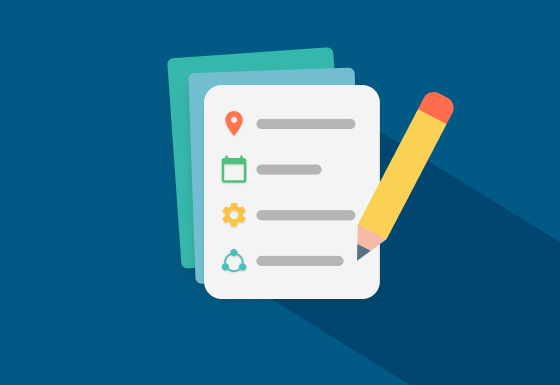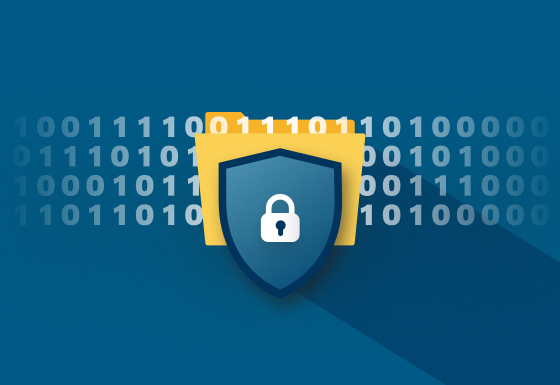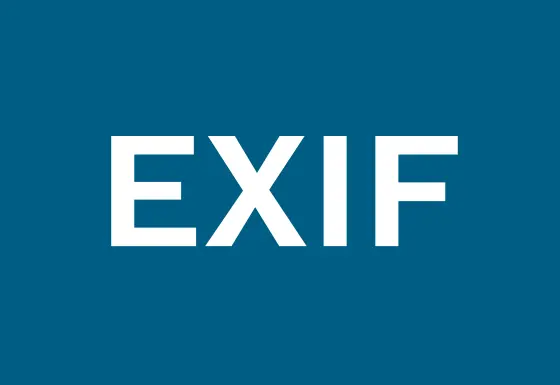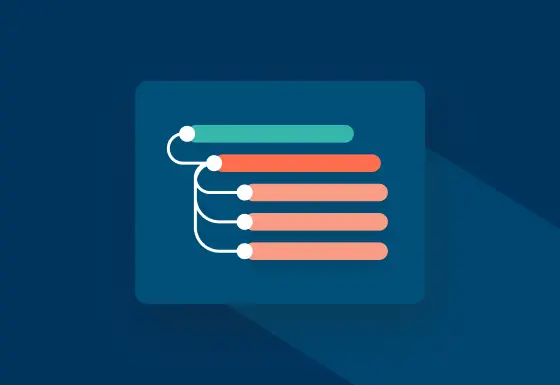Navigating the world of digital information can be stressful. It requires a clear strategy, especially when it comes to organizing and securing your company’s digital media files. Let's find out how data governance, along with metadata and digital asset management software, can help you manage an organized and secure digital workspace.
What is Data Governance?
These days, many companies are amid their digital transformation. One of their biggest challenges is protecting their most valuable assets which are digital data. In addition, efficient data management is also playing an increasingly important role in companies.
To overcome both challenges, a framework with easy-to-understand guidelines is needed. That’s what data governance offers you: Data governance is a framework consisting of procedures and guidelines covering the entire life cycle of data.
Imagine data governance frameworks as blueprints for the journey of digital data within your company that support your overarching data management strategy. The main goal of a data governance framework is to ensure the
security,
integrity,
availability, and
usability
of the data your company is handling daily.
Data governance tells you and your colleagues how data should be managed, accessed, and utilized. It also determines who is allowed to access which data, using which tool, and following which process.
How are Data Governance and Metadata Connected?
Data governance frameworks cover various areas, including data security and data quality. Another particularly important area is metadata. It is a vital component for data governance as it offers a clear understanding of data.
Read the full guide on metadata in our blog.
Therefore, data governance and metadata are closely linked: The data governance frameworks define important rules for handling data, while metadata provides the necessary information about the data to be managed.
Only with metadata is it possible to better understand and organize files and handle them in accordance with the data governance frameworks.
5 Important Advantages of Data Governance
Data governance is crucial for any organization’s data management strategy. Implementing such a strategy gives you full control over digital assets.
To successfully implement data governance, you first need to defined roles and responsibilities and gain an understanding of how data is used by anyone in your company. Crafting a data governance system is hard work but believe us: it pays off in the end. This is how your company benefits from data governance:
Better Decisions: People across your organization gain access to the right data at the right time, empowering everyone to make informed decisions, for example for the next marketing campaign.
Enhanced Regulatory Compliance: In an increasingly complex legal landscape, data governance protects your company from the risks of non-compliance and improves compliance with data regulations. Clear data rules also help your company become more agile and more scalable.
Effective Cost Reductions: The easier the data management the smaller the cost.
Easy Resource Management: Efficient data governance eliminates data duplication, ensuring effective resource management. It also facilitates streamlined decision-making processes.
Building a Culture of Reliability: Data governance frameworks improve confidence in the quality of data and help establish a culture of reliability. The data governance guidelines ensure that data is handled consistently across all departments.
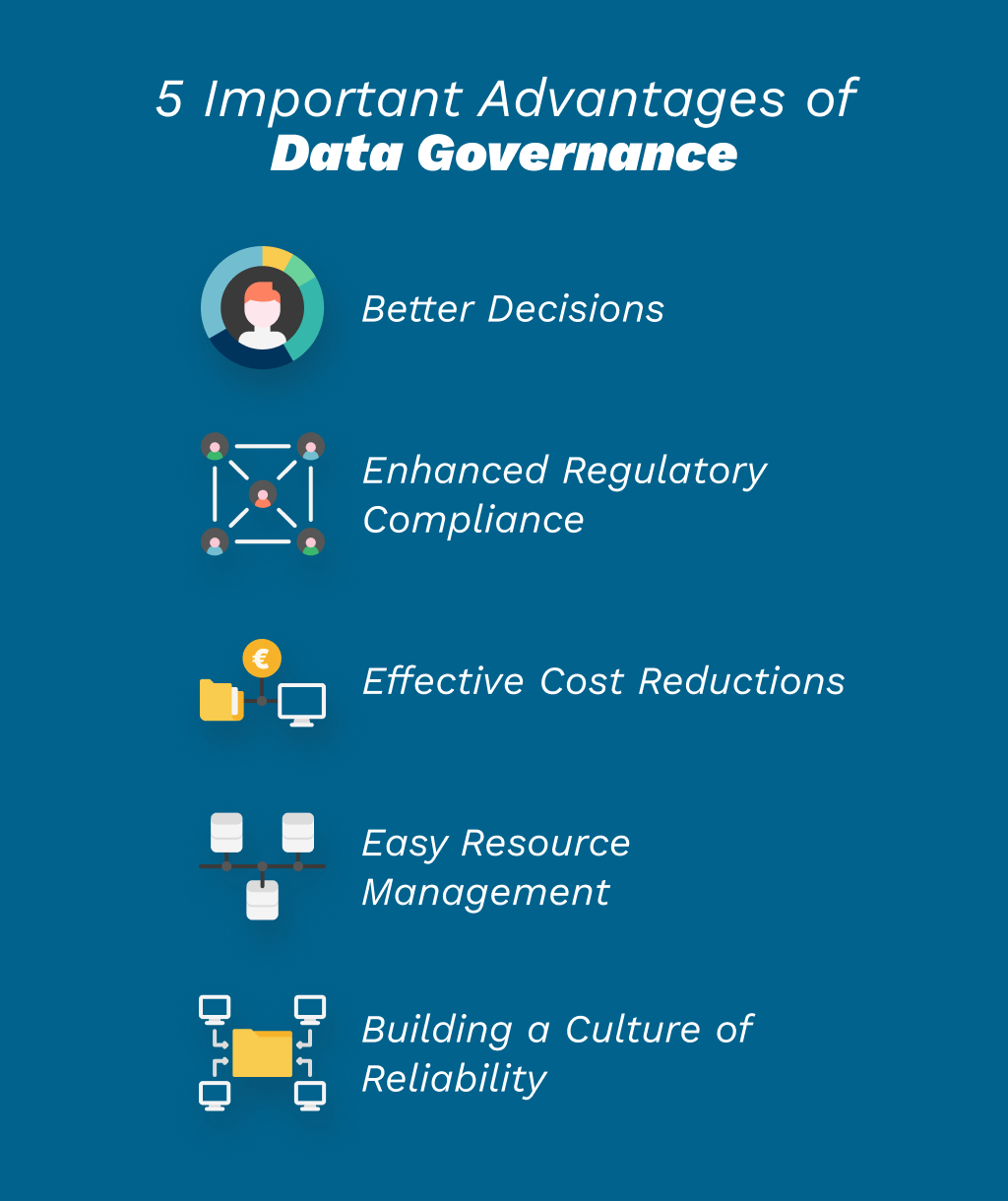
Why Data Governance is Crucial for GDPR Compliance
Wondering if data governance also helps you comply with data protection regulations? In Europe, the GDPR prescribes strict data protection practices for companies that handle sensitive customer data. This is how data governance helps:
Data security and privacy: Data governance ensures that data is handled securely and is protected from unauthorized access and breaches. This fits in seamlessly with the GDPR’s emphasis on data security and data protection.
Data accountability and ownership: The GDPR emphasizes knowing where your data is and who is responsible for it. Data governance, particularly through metadata management, helps with data accountability and ownership.
Data quality and accuracy: GDPR compliance requires accurate and up-to-date data. Data governance frameworks, with their focus on data quality, play a central role in ensuring that the information you hold is accurate and reliable.
Rights of data subjects: The GDPR grants data subjects certain rights in relation to their personal data. Effective data governance enables companies to respond promptly and accurately to requests from data subjects to ensure compliance with these rights.
How to Successfully Implement Data Governance
To be able to use data governance, rules and principles are necessary, which your company must first develop. To do this, you analyze
what data is available in the company,
where it is located, who works with it and
how it should be organized and used in the future.
Once the guidelines and responsibilities have been defined, you need a tool to help you organize your media files. A digital asset management tool like pixx.io is unbeatable in this area.
The software allows you to organize, store, retrieve and distribute digital assets such as images, videos, or text documents. A DAM is a central platform where all these assets are managed to make them easily accessible.
This is how pixxi.io supports your data governance plans and your metadata management:
Centralization and organization: Data management requires centralization and organization. That’s exactly what a DAM provides you with. It serves as a central storage location for your digital assets and ensures that they are systematically organized and easily accessible.
Enrichment of metadata: Each asset in pixx.io is accompanied by metadata that provides important information about its origin, use and relevance. Using metadata improves searchability of assets. The "data about data" gives you and your team a better understanding of your digital assets so that you can apply your data governance frameworks more easily.
Access control and security: pixx.io provides safe access of your files. Therefore, sensitive assets are only accessible to authorized personnel.
Streamlining workflows: Efficient data management wouldn’t work without optimized workflows. pixx.io allows you to implement automated workflows for tasks such as approvals, version control and distribution.
Integration capabilities: pixx.io integrates seamlessly with your favorite tools and platforms to create a unified ecosystem. The DAM ensures that your digital assets are not isolated, but part of a larger data governance ecosystem.
As you navigate the ever-growing sea of digital information, As you navigate the ever-growing sea of digital information, data governance, metadata, and pixx.io are there to guide you. Together, they unlock advantages such as neatly organized digital data, compliance adherence and easy and safe data access.
If you would like to go on a data governance journey with a reliable tool that accompanies you, try pixx.io for free.
Sabrina
Sabrina writes for pixx.io about everything that concerns you in your day-to-day work and helps you to overcome challenges in content and social media marketing, image formats or compliance. When it comes to complex topics, she prepares the knowledge of media and legal experts for you in an understandable way.
